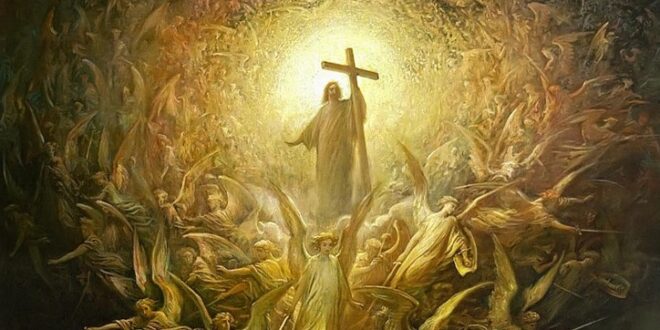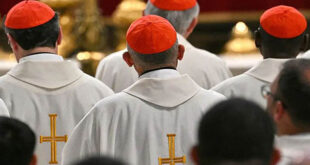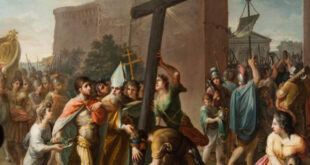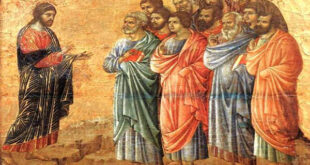At the heart of traditional Catholic liturgy lies a hymn that has resonated through the centuries, evoking both fear and hope in the souls of the faithful. The Dies Irae, translated as “The Day of Wrath,” is a masterpiece of sacred poetry that immerses us in the contemplation of the Final Judgment. This chant, traditionally attributed to Thomas of Celano in the 13th century, is not only a jewel of religious music and literature but also a profound theological treatise that invites us to reflect on the eternal destiny of humanity.
In a modern world that often seems to have forgotten transcendence, the Dies Irae reminds us that human life is not a mere cosmic accident but a journey toward a definitive encounter with God. Join me on this journey through the depths of this hymn, where we will explore its theological meaning, its spiritual relevance, and its application in our daily lives.
The Historical and Liturgical Context of the Dies Irae
The Dies Irae was part of the Office of the Dead (Requiem) in the traditional Roman liturgy, sung especially during Requiem Masses and the season of Advent, when the Church invites us to prepare for the coming of Christ, both in Bethlehem and at the end of time. Its lyrics, written in Latin, are imbued with biblical and apocalyptic language, inspired by passages such as the Book of Daniel, the Revelation of Saint John, and Jesus’ eschatological discourses in the Gospels.
The hymn begins with a vivid description of the day of the Final Judgment: “Dies irae, dies illa, solvet saeclum in favilla” (“Day of wrath, that day, will reduce the world to ashes”). These words place us before the majesty of God, who, as a just Judge, will bring human history to an end and separate the righteous from the sinners. However, far from being a message of despair, the Dies Irae is a call to conversion and trust in divine mercy.
The Theology of the Final Judgment in the Dies Irae
The hymn develops three major theological themes: the justice of God, divine mercy, and hope in salvation. These pillars are not contradictory but complementary, reflecting the fullness of Christian revelation.
- The Justice of God:
The Dies Irae reminds us that God is holy and just, and that there can be no impunity for evil. Sin, as a rupture in the relationship with God, has eternal consequences. The hymn describes the judgment as a moment of total revelation: “Liber scriptus proferetur, in quo totum continetur” (“A written book will be presented, in which everything is contained”). This “book” symbolizes the human conscience, where every thought, word, and deed will be exposed to the light of truth.In a world that relativizes sin and trivializes evil, the Dies Irae confronts us with the reality of divine justice. This is not a vengeful God but a loving Father who calls us to take responsibility for our actions. - Divine Mercy:
Although the hymn begins with images of terror, it soon becomes a plea full of hope: “Rex tremendae maiestatis, qui salvandos salvas gratis, salva me, fons pietatis” (“King of tremendous majesty, who freely saves those who are to be saved, save me, fountain of mercy”). Here we see the tension between justice and mercy, which is resolved in the cross of Christ. Jesus, the merciful Judge, is also the Savior who offers His life for us.This message is especially relevant today, when many live trapped in guilt and discouragement. The Dies Irae teaches us that, no matter how grave our sin, God’s mercy is always greater. - Hope in Salvation:
The hymn culminates with a confident prayer: “Pie Iesu Domine, dona eis requiem” (“Merciful Lord Jesus, grant them rest”). This plea reflects the Christian hope in the resurrection and eternal life. The Final Judgment is not only a day of condemnation but also of glorification for those who have lived in Christ.
The Dies Irae and the Modern World
In our era, marked by secularism and religious indifference, the Dies Irae challenges us to recover the sense of the sacred and the awareness of eternity. We live in a culture that seeks immediate pleasure and avoids the fundamental questions about the meaning of life and death. This hymn reminds us that our existence has an eternal purpose and that our decisions have consequences that transcend this world.
Moreover, the Dies Irae is an antidote to despair. In a time of global crisis, wars, and divisions, this chant invites us to trust in God’s providence and to work for the building of His Kingdom, knowing that, in the end, good will triumph over evil.
How to Live the Message of the Dies Irae Today
- Examination of Conscience:
The hymn invites us to examine our lives in the light of truth. Are we living according to God’s will? Have we loved our brothers and sisters, especially the most needy? - Continuous Conversion:
The Dies Irae is a call to conversion. We cannot postpone our reconciliation with God. The sacrament of confession is a gift of mercy that prepares us for the definitive encounter with the Lord. - Living with Hope:
Although the hymn speaks of judgment, it also fills us with hope. Christ has conquered sin and death and offers us eternal life. This certainty should inspire us to live with joy and generosity.
Conclusion: A Song for the Soul
The Dies Irae is not only a hymn for the dead but also for the living. It is a reminder that our life is a journey toward God and that each day is an opportunity to prepare for the definitive encounter with Him. In a world that often forgets eternity, this chant brings us back to what is essential: the justice, mercy, and hope that only God can offer.
May the Dies Irae inspire us to live authentically, to love generously, and to trust in Christ’s promise: “Come, you who are blessed by my Father, inherit the Kingdom prepared for you from the foundation of the world” (Matthew 25:34). On that day, far from being a day of wrath, it will be the day of fulfillment, when God will be all in all.






